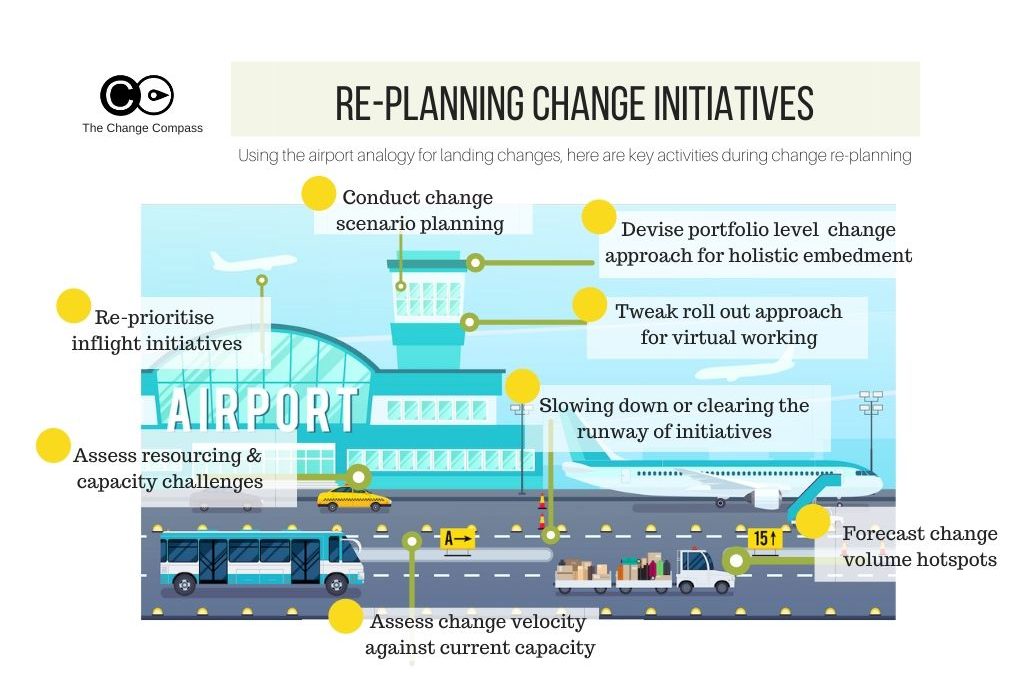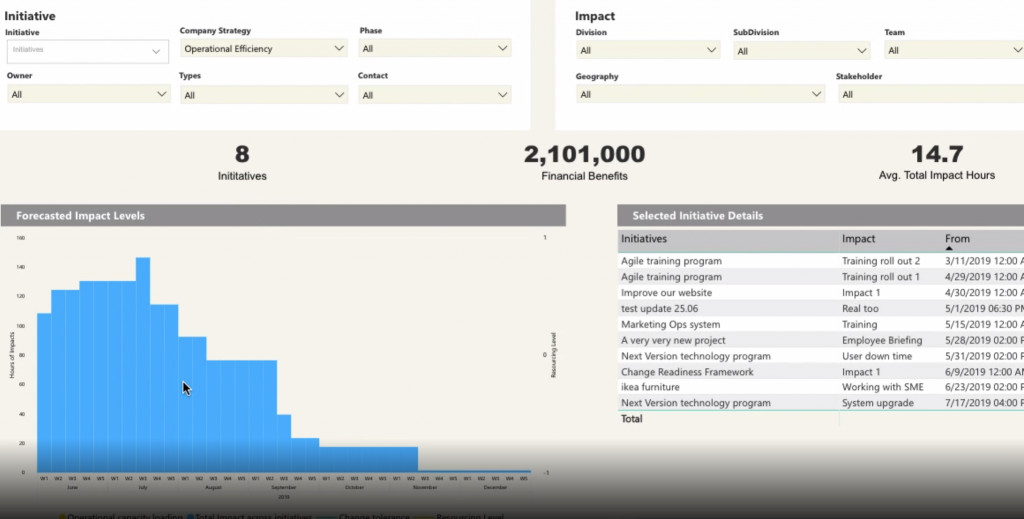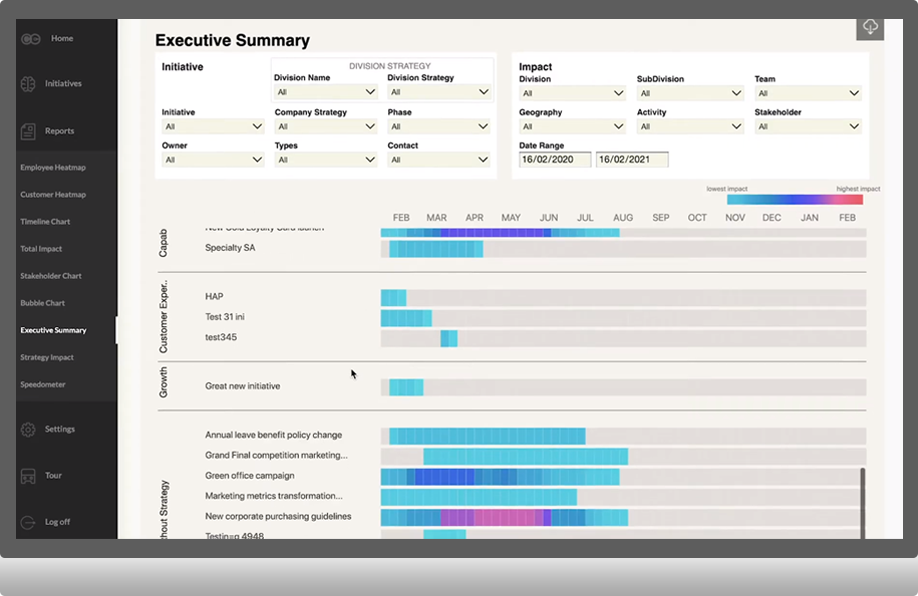
Infographic – re-planning change initiatives
Please click here to download the infographic.

Please click here to download the infographic.

“When disaster strikes, it tears the curtain away from the festering problems that we have beneath them,”
Obama
Most of the world is now shrouded in a thick cloud that is the coronavirus. It is shaping a lot of our daily lives, from shopping, travelling, visiting friends, work, economy and not the least health. Some businesses are going under whilst others struck with sudden increased demand. Chaos and panic abound. There will certainly be significant levels of economic and therefore industry impacts resulting from the virus. As a result of the sudden shifts in business decisions, what is the role of the change practitioner? With the right tools, data and approach, the change practitioner can be the lynch-pin to enable the organisation to plan effectively through the impacts of the virus.
Let’s outline some of the current landscape and what a lot of businesses are undergoing.
Offshore staffing changes
Many companies are impacted by quarantine decisions. In certain countries such as the Philippines there is a significant presence of offshore operations. To rapidly contain the spread of the virus the Philippines government on Monday has ordered community quarantines covering half of the population leading to business shutdowns. What this means is that many companies have suddenly found themselves in the position of having to rapidly ramp up their onshore operations to deal with customer call volumes.
Even those who have other offshore operations not in the Philippines will be wise to review their business continuity planning in the event that their business partners are impacted.
Work from home
To protect employees from the spread of the virus a significant number of companies have asked all of their employees to work from home where possible. This also leads to a significant shift in the ways of working for these organisations, especially if the core skills of leading and managing workforce virtually are new skill sets. To read more about how to deal with the impacts of the virus go to our article Managing Change During the Cornoavirus.
Restricted travel
Most companies have also implemented restrictions on travel. Some countries have even implemented international travel quarantines, essentially reducing the majority of inflows of visitors.
Resource ramp-up
For those companies who need to ramp up onshore operations, this presents challenges in terms of the speed of resource ramp-up to meet customer demands. Challenges include the availability of technical equipment such as headsets and laptops, as well as finding the talent pool when there is restricted travelling.
Other companies are significantly benefiting from the current situation, for example, digital retailers such as Amazon, Ebay or medical equipment providers and suppliers.
Resource ramp down and cost containment
A lot of retailers are hard hit by the sudden slow-down of retail foot traffic. Airlines have drastically cut flights and travel agencies are hit by the lack of travel bookings. Some have started to lay off staff in anticipation of continuing downturn in customer numbers. Even for those who have not yet laid off staff, there is focus on cost containment amidst cost challenges from declining revenue.
Business continuity plans
Most of the businesses negatively impacted by the virus in a significant way are resorting to their business continuity plan. This means that the chain of command may be different from business-as-usual and decision making may be faster or slower depending on the nature of the decision. This also means that any business plans in place may change. Focus and resources may be shifted leading to significant change for employees.
Business replanning implications
Given significant disturbances to business-as-usual activities, what are the options in terms of existing change initiatives? Most organizations will be in the middle of reviewing or re-planning existing focus areas including change initiatives. The following are some of the likely scenarios.
The role of the change practitioner
Impacts of changing plans
Given most large organizations are already undergoing various change initiatives to stay competitive, the changes caused by the coronavirus adds to the volume and pace of existing planned set of changes. The project management office, as well as other planning teams will benefit significantly from access to change impact information and data to make balanced decisions on any business replanning activities.
Some of these include:

Model likely scenarios of moving initiatives
The other area in which the change practitioner may add significant value in the business replanning exercise is in helping to articulate and visualise the impact of moving initiatives. As outlined previously, these could be the result of re-sequencing, re-prioritisation or scenario planning to better manage risk exposure for the organisation.
In modelling the impacts of various scenarios, key call outs include:

Plan restructuring exercises
Often restructuring exercises are lead by senior managers with the guidance of human resource partners from a people and HR policy perspective. However, the value of the change practitioner is in designing the restructuring as a project, containing scoped phases and planned according to a sequence of logical steps based on sound change principles. After all, restructuring exerts the highest impact on individuals more than other changes.
Restructuring is no different than other change initiatives. There needs to be clear articulation of the reasons or the ‘why’ behind the restructuring, logical articulation of how decisions are made, clear detailing of impacts to the organisations and people overall, and a series of planned steps in which to engage impacted stakeholders to support them through the change.
Adjusting change approaches to fit in with virtual working
With the sudden switch to working from home or virtual working, some employees may not be familiar or comfortable with this way of working. Existing change initiatives may have been designed with face-to-face sessions such as town halls, training sessions etc. With the virtual working environment change practitioners need to readjust the change approach and think through ways of driving effective change virtually.
These include such as:
Continuous engagement of employees during this change
In order to proactively engage the employee during this time of change, follow core change principles. For example, engage early and continuous to outline the direction of the organisation, and check-in continuously to gage employee sentiments to assess their change journey. Adjust and pivot as needed to provide any additional support. Share any wins such as examples of effective virtual working tips and employee profiles. Share stories of how effective teams have overcome the potential challenges of social isolation and still deliver solid business outcomes.

The world is now watching and experiencing an emerging coronavirus pandemic. There is widespread anticipation and fear in many parts of the world, especially those with higher rates of infection. This poses an interesting scenario of testing the capability of organisations in managing change during coronavirus. And in fact …. the virus itself is a change that forces organisations to work and organise itself differently.
The change caused by coronavirus is vast. Travel bookings are cancelled and prohibited. Employees in highly infected areas are told to work from home. Expatriates are sent home and many face forced quarantine. In Australia, Australian evacuees from Wuhan in China (where the virus was first spread to humans) are placed in Christmas Island detention centres. In many parts of the world, cities have become ghost towns. Soccer stadiums lay empty. Some countries have even closed borders to countries infected with high rates of the virus. In Hong Kong office staff are working from home, along with their partners. And often within close proximity of where their children are playing, which can be challenging.
No doubt about it – the coronavirus is one of the tests of an organisation’s ability to undergo change. Some are more prepared than others.
So how does an organisation manage the changes inflicted by coronavirus?
Change leadership
Most companies follow the usual approaches of sending out notifications on company policies and any restrictions such as business travel and working from home policies. However, in this time of uncertainty leaders need to stand out and help navigate through the various changes caused by the virus.
This means communicating early and frequently about what is happening and relaying any useful information as needed such as travel and technology needs. Leaders need to gage any employee sentiments and concerns about what is happening around them. Promote discussions as needed to sense-check any employee concerns and offer support.
Effective change leaders also need to proactive interpret what the changes mean to the team and assess the various impacts of the change. Does it make sense for all team members to work from home? Are there any connectivity issues? Does the team have the skills to work virtually? How are the team’s deliverables going to be impacted by the virus in terms of potential increases or decreases in workload? What other teams might benefit from the support of the team in the current environment?
Rules of engagement
With any significant changes in ways of working and operating there needs to be clear rules of engagement set for employees.
For example:
Agile organisations can easily bend and flex according to changing industry pressures and customer requirements. If business volumes drop, what are the ways in which the organisation can scale down as needed to stay afloat? This is more than just about business continuity plans as it is about the flexibility of the operating model and ways of working to undergo rapid change.
Using virtual tools for collaboration
When the previous epidemic SARS hit back in 2003 working virtually was less prevalent. Now, equipped with a range of technological tools, organizations can easily make things work much more effectively in a virtual environment.
The trick is not to assume that one magical tool will meet all of your needs. Instead, use different tools for different purposes. Here are some digital tools that may help:
Working virtually can also mean that some of the body languages cannot be seen and therefore using visual aids is more critical in a virtual working environment more than in a face-to-face situation. Using visual aids helps to make communication even clearer and easier to follow for the audience.
Draw.io is worth mentioning as it is free and also super easy to use. There is a range of different templates that are ready to use. A team can use this to start brainstorming ideas, work through a logic tree, fill in a flow-chart, develop a project approach, define a timeline, etc.
Balancing planned initiatives
Most organisations are already balancing multiple changes at any given time prior to the arrival of coronavirus. What this means to most organisations is that the impact of coronavirus is one more change that piles on top of existing change initiatives.
Organisations need to carefully assess the planned set of changes and ascertain to what extent existing changes may need to be tweaked as a result of the virus. Do initiatives need to be delayed or paused? Or will the implementation approach need to be different as a result of the virtual nature of work for more targeted employees? Will communication mediums need to change as a result? What about learning mediums? What are the feasible learning platforms and how effective are these for targeted employees?
Data visualisation tools for change such as The Change Compass can provide a visual way of understanding the volume and pace of change across the organisation. In particular, assessing the collective impacts of events such as the virus on the employees given other planned changes. This, in turn, can help with business decision making regarding the roll -out of the various changes to maximise business readiness and adoption.